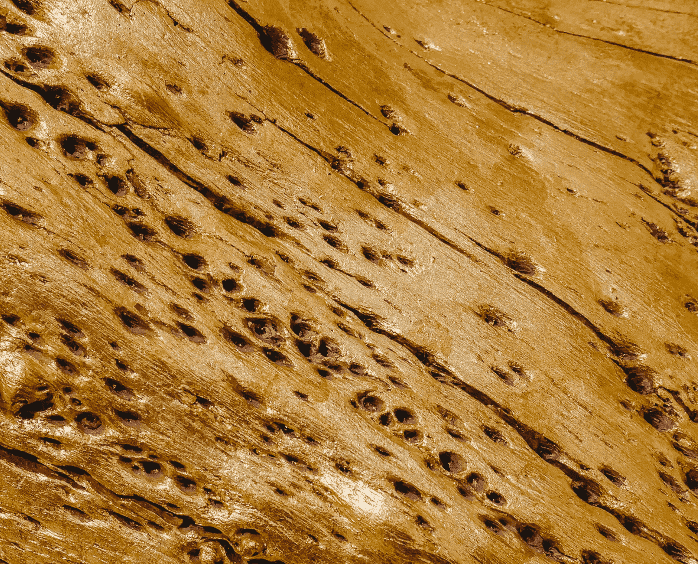Termite risk in construction

Termites are formidable insects for wood construction. But who are they and how can you recognise them? By attacking the wood inside, they are invisible and silent, so they are often detected too late! By weakening the structures of a building, it can even lead to collapse! Faced with such a risk, it is important to take the necessary precautions to ensure that buildings are protected.
What are termites?
Termitesare insects that look like small, whitish ants no bigger than 1 cm. These insects feed on the cellulose found in wood, paper and cardboard, etc. They live in perfectly organised colonies in their termite mounds, sheltered from the light.
Termites are organised into 3 castes. Genders of the termites: the king and queen, the workers are those who destroy the wood and feed the colony, and the soldiers are those who protect and defend the termite mound.
They are normally present in forests and help to recycle dead wood, but unfortunately some speciesattack timber.
There are more than 2,700 species worldwide, but in cities there are 2 main species:
- Subterranean termites , which live in the ground, are the most harmful
- Dry wood termites are able to live without moisture or a source of water and live directly in a piece of wood (furniture) without ever passing through the ground
Termites are very common in both tropical and temperate zones , and attack all types of wood, with a few exceptions such as teak.
In Europe, termites are notorious for the damage they cause to homes. In France, they are present in over 50 départements. Since 1999, the termite law protects purchasers of property against termites. If these wood-eating insects are present, it is compulsory to report them to the authorities and to carry out disinsectisation.
Detecting termites in buildings
Termites can cause major damage to buildings by nibbling away at wood and building materials such as plaster and insulation from the inside.
Silent and invisible, to recognise the presence of termites, you need to look at the wood:
- In fact, termites, in search of the wood’s cellulose, form galleries inside the wood, which can appear on the surface of walls from the ground floor to the attic of a house.
- Traces of powder resembling sawdust can also be seen around broken or split wood.
- If the wood sounds hollow when you knock on it, or if it seems porous, it could be a termite infestation.
How can I protect timber against termites? The XILIX range
At Groupe Berkem, we offer effective solutions to ensure infallible protection of building materials against termites.
The XILIX range benefits from over 50 years’ know-how in formulation, and certificates of effectiveness attesting to their reliability, conformity and suitability for use on building materials and outdoor landscaping.
XILIX Termisol BS is an innovative solution providing impenetrable protection against termites to protect building materials. This solution comes in the form of a concentrated aqueous microemulsion to be diluted with water and applied directly to masonry. The effectiveness of XILIX Termisol has been approved by experts in the field and in laboratories, and guarantees effectiveness for 5 years in treated soils and walls.
Termifilm is a preventive solution used to provide lasting protection against termites during construction. In the form of a resistant film, this protective barrier is placed between the floor and the frame. This will prevent termites from gaining access to the masonry and various conduits and invading the building. Protecting a building before it is built means guaranteeing lasting protection that complies with current regulations.